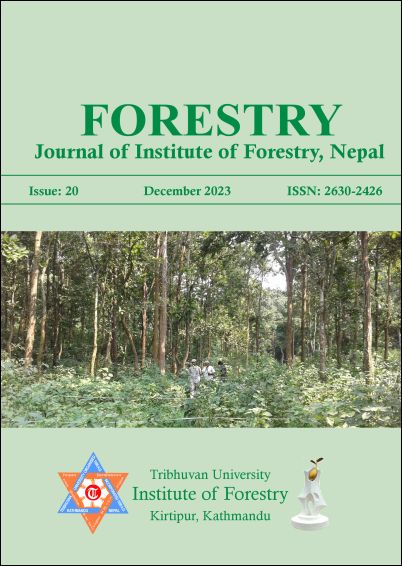Diversity and Distribution of 100 Plant Species of a Community Managed Forest from the Mid-Hills of Nepal: A Phytosociological Approach
DOI:
https://doi.org/10.3126/forestry.v20i1.64339Keywords:
Diversity indices, Subtropical Forest, Vegetation, Vegetation analysisAbstract
Phytosociology is the study of interrelationship among plant species which classifies the vegetation in a meaningful manner. The aim of this study was to study diversity and distribution of plant species in Gobankholi Community Forest in the Mid-Hills of Nepal which is dominated by Pinus roxburghii. Trees were enumerated in a 400 sq. m. plot, shrubs and climber in a 100 sq. m plot and herbs in a 4 sq. m. plot. Density, frequency, abundance, and important value index of individual species were calculated. Similarly, Simpson's diversity index, Shannon’s diversity index, and Pielou's evenness index were also calculated, based on life form viz. herbs, shrubs and trees. 66 herbs, 8 Pteridophytes, 8 shrubs, 3 climbers and 15 trees were found, among a total of 100 species. The rare orchid, Satyrium nepalense, was found at an altitude of 1275 m a.s.l. Herbs were more diverse and even than trees, shrubs and climbers. Aleuritopteris bicolor, Colebrookea oppositifolia and Pinus roxburghii were the most dominant herb, shrub and tree respectively.
Downloads
Downloads
Published
How to Cite
Issue
Section
License
© Tribhuvan University, Institute of Forestry




